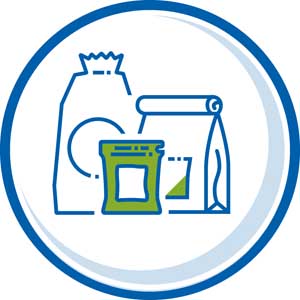CEFLEX has developed a unique understanding of flexible packaging material flows, design and secondary markets to help inform policy decisions on PPWR secondary legislation.
The Packaging and Packaging Waste Regulation (PPWR) places a welcome focus and urgency on higher recycling rates, recycled content and increased quality – critical pillars of CEFLEX’s Mission Circular vision. But significant challenges lie ahead, notably ensuring a 55% recycling rate for flexible plastic packaging by 2035.
However, delivering transformation towards circular materials is CEFLEX’s very reason for existing and we are engaging with policymakers to assist with understanding of how various measures will impact recycling rates, informed by adjustments in our estimates of the infrastructure and investments needed to ensure that flexible packaging is recycled at scale by 2035.
 Together with our nearly 200 stakeholders, we build understanding and action with data-driven assessment of the technical, environmental and financial barriers to delivering circular packaging materials.
Together with our nearly 200 stakeholders, we build understanding and action with data-driven assessment of the technical, environmental and financial barriers to delivering circular packaging materials.
This can assist policy makers by helping lower or remove barriers to delivering legislation.
Our mandate covers collection, sorting, recycling and use of recycled materials in secondary applications; and includes alignment on agreed visions on key topics such as design principals, separate collection and recycling pathways.
Areas of our work that might inform preparations, studies and policy decisions related to Packaging and Packaging Waste Regulation secondary legislation include:

Placed on market – Understanding the amount and type of flexible packaging placed on the European market and found in the waste stream and the post-consumer waste management options needed to manage them.

Secondary markets – Identifying and evaluating the technical and economic potential to use in new packaging and products secondary raw materials from flexible packaging placed on market, to help meet recycled content targets.

Recycling pathways – Bringing clarity on the required recycling infrastructure to deliver PPWR targets, including capacities and technologies to achieve recycled at scale targets.

Sorting capabitilities and capacity – Possessing detailed assessment of proven sorting technologies needed to optimise feedstock supply and improve quality and scale of recycling infrastructure.

Collection systems – A vision of how flexible packaging is collected in key EU markets; and understanding of mixed waste sorting potential to assist national collection obligations and objectives.

Design-for-Circularity guidance and testing – Gathering evidence and seeking alignment on the recyclability of flexible packaging designs through evolving guidelines developed as a value chain initiative, supported by a scientific test programme conducted by reputable laboratories and academics and consulted by over 10,000 organisations worldwide. These insights are shared as part of the CEN standardisation work on Design for Recyclability.

Extended Producer Responsibility (EPR) – Sharing expertise in how EPR schemes and Producer Responsibility Organisations (PROs) can shape collection, reward good design, ensure sufficient sorting and recycling capacity and help to ensure a supply of feedstock for end markets at a competitive cost, which is especially key for flexible packaging.
Bringing all this together is our ‘MÖBIUS’ modelling platform. It is able to work with multiple baseline scenarios and assess possible outcomes to bring greater understanding of the material flows and infrastructure required to develop the circular economy for flexible plastics.
This analysis work is developed using a range of public and paid data sources, our stakeholder expertise, plus our unique lead or access to multi-country analysis studies, industry trials, pioneering independent testing and industrial-academic collaborations.
About CEFLEX and flexible packaging
The Circular Economy for Flexible Packaging (CEFLEX) initiative represents a critical mass of stakeholders from across the entire value chain – nearly 200 organisations – collaborating, innovating and investing together to make flexible packaging circular in Europe.
This includes producers of raw materials, packaging manufacturers, branded goods producers, recyclers, suppliers of equipment, Producer Responsibility Organisations and independent academic experts.
